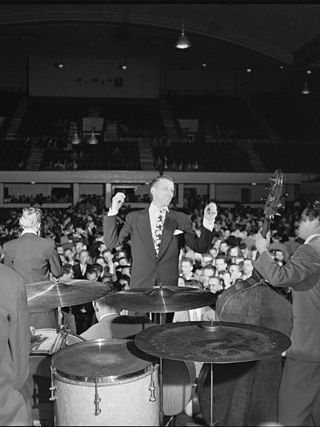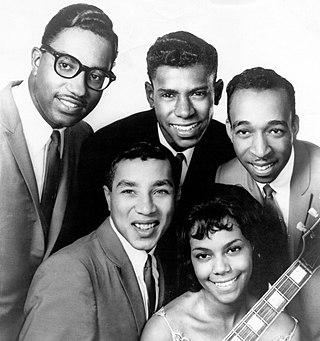Related Research Articles

Psychedelic rock is a rock music genre that is inspired, influenced, or representative of psychedelic culture, which is centered on perception-altering hallucinogenic drugs. The music incorporated new electronic sound effects and recording techniques, extended instrumental solos, and improvisation. Many psychedelic groups differ in style, and the label is often applied spuriously.

Progressive music is music that attempts to expand existing stylistic boundaries associated with specific genres of music. The word comes from the basic concept of "progress", which refers to advancements through accumulation, and is often deployed in the context of distinct genres, with progressive rock being the most notable example. Music that is deemed "progressive" usually synthesizes influences from various cultural domains, such as European art music, Celtic folk, West Indian, or African. It is rooted in the idea of a cultural alternative, and may also be associated with auteur-stars and concept albums, considered traditional structures of the music industry.
Rock is a broad genre of popular music that originated as "rock and roll" in the United States in the late 1940s and early 1950s, developing into a range of different styles from the mid-1960s, particularly in the United States and the United Kingdom. It has its roots in 1940s and 1950s rock and roll, a style that drew directly from the blues and rhythm and blues genres of African-American music and from country music. Rock also drew strongly from genres such as electric blues and folk, and incorporated influences from jazz and other musical styles. For instrumentation, rock has centered on the electric guitar, usually as part of a rock group with electric bass guitar, drums, and one or more singers. Usually, rock is song-based music with a 4
4 time signature using a verse–chorus form, but the genre has become extremely diverse. Like pop music, lyrics often stress romantic love but also address a wide variety of other themes that are frequently social or political. Rock was the most popular genre of music in the U.S. and much of the Western world from the 1950s to the 2010s.
Progressive rock is a broad genre of rock music that primarily developed in the United Kingdom through the mid- to late 1960s, peaking in the early 1970s. Initially termed "progressive pop", the style was an emergence of psychedelic bands who abandoned standard pop traditions in favour of instrumentation and compositional techniques more frequently associated with jazz, folk, or classical music. Additional elements contributed to its "progressive" label: lyrics were more poetic, technology was harnessed for new sounds, music approached the condition of "art", and the studio, rather than the stage, became the focus of musical activity, which often involved creating music for listening rather than dancing.
Folk rock is a genre of rock music with heavy influences from English folk and American folk music. Combining the elements of folk and rock music, it arose in the United States, Canada, and the United Kingdom in the mid-1960s. In the U.S., folk rock emerged from the folk music revival. Performers such as Bob Dylan and the Byrds—several of whose members had earlier played in folk ensembles—attempted to blend the sounds of rock with their pre-existing folk repertoire, adopting the use of electric instrumentation and drums in a way previously discouraged in the U.S. folk community. The term "folk rock" was initially used in the U.S. music press in June 1965 to describe the Byrds' music.

Throughout the history of the British Isles, the land that is now the United Kingdom has been a major music producer, drawing inspiration from church music and traditional folk music, using instruments from England, Scotland, Northern Ireland, and Wales. Each of the four countries of the United Kingdom has its own diverse and distinctive folk music forms, which flourished until the era of industrialisation when they began to be replaced by new forms of popular music, including music hall and brass bands. Many British musicians have influenced modern music on a global scale, and the UK has one of the world's largest music industries. English, Scottish, Irish, and Welsh folk music as well as other British styles of music heavily influenced American music such as American folk music, American march music, old-time, ragtime, blues, country, and bluegrass. The UK has birthed many popular music genres such as beat music, psychedelic music, progressive rock/pop, heavy metal, new wave, and industrial music.
Popular music of the United Kingdom in the 1970s built upon the new forms of music developed from blues rock towards the end of the 1960s, including folk rock and psychedelic rock movements. Several important and influential subgenres were created in Britain in this period, by pursuing the limitations of rock music, including British folk rock and glam rock, a process that reached its apogee in the development of progressive rock and one of the most enduring subgenres in heavy metal music. Britain also began to be increasingly influenced by third world music, including Jamaican and Indian music, resulting in new music scenes and subgenres. In the middle years of the decade the influence of the pub rock and American punk rock movements led to the British intensification of punk, which swept away much of the existing landscape of popular music, replacing it with much more diverse new wave and post punk bands who mixed different forms of music and influences to dominate rock and pop music into the 1980s.
Roots rock is a genre of rock music that looks back to rock's origins in folk, blues and country music. It is seen as responses to the perceived excesses of the dominant psychedelic and the developing progressive rock. Because roots music (Americana) is often used to mean folk and world musical forms, roots rock is sometimes used in a broad sense to describe any rock music that incorporates elements of this music. In the 1980s, roots rock enjoyed a revival in response to trends in punk rock, new wave, and heavy metal music.

British rock describes a wide variety of forms of music made in the United Kingdom. Since around 1964, with the "British Invasion" of the United States spearheaded by the Beatles, British rock music has had a considerable impact on the development of American music and rock music across the world.
British folk rock is a form of folk rock which developed in the United Kingdom from the mid 1960s, and was at its most significant in the 1970s. Though the merging of folk and rock music came from several sources, it is widely regarded that the success of "The House of the Rising Sun" by British band the Animals in 1964 was a catalyst, prompting Bob Dylan to "go electric", in which, like the Animals, he brought folk and rock music together, from which other musicians followed. In the same year, the Beatles began incorporating overt folk influences into their music, most noticeably on their Beatles for Sale album. The Beatles and other British Invasion bands, in turn, influenced the American band the Byrds, who released their recording of Dylan's "Mr. Tambourine Man" in April 1965, setting off the mid-1960s American folk rock movement. A number of British groups, usually those associated with the British folk revival, moved into folk rock in the mid-1960s, including the Strawbs, Pentangle, and Fairport Convention.
Psychedelic folk is a loosely defined form of psychedelia that originated in the 1960s. It retains the largely acoustic instrumentation of folk, but adds musical elements common to psychedelic music.
Psychedelic music is a wide range of popular music styles and genres influenced by 1960s psychedelia, a subculture of people who used psychedelic drugs such as 5-MeO-DMT, DMT, LSD, mescaline, and psilocybin mushrooms, to experience synesthesia and altered states of consciousness. Psychedelic music may also aim to enhance the experience of using these drugs and has been found to have a significant influence on psychedelic therapy.

Contemporary folk music refers to a wide variety of genres that emerged in the mid 20th century and afterwards which were associated with traditional folk music. Starting in the mid-20th century, a new form of popular folk music evolved from traditional folk music. This process and period is called the (second) folk revival and reached a zenith in the 1960s. The most common name for this new form of music is also "folk music", but is often called "contemporary folk music" or "folk revival music" to make the distinction. The transition was somewhat centered in the United States and is also called the American folk music revival. Fusion genres such as folk rock and others also evolved within this phenomenon. While contemporary folk music is a genre generally distinct from traditional folk music, it often shares the same English name, performers and venues as traditional folk music; even individual songs may be a blend of the two.
Medieval folk rock, medieval rock or medieval folk is a musical subgenre that emerged in the early 1970s in England and Germany which combined elements of early music with rock music. It grew out of the British folk rock and progressive folk movements of the late 1960s. Despite the name, the term was used indiscriminately to categorise performers who incorporated elements of medieval, renaissance and baroque music into their work and sometimes to describe groups who used few, or no, electric instruments. This subgenre reached its height towards the middle of the 1970s when it achieved some mainstream success in Britain, but within a few years most groups had either disbanded, or were absorbed into the wider movements of progressive folk and progressive rock. Nevertheless, the genre had a considerable impact within progressive rock where early music, and medievalism in general, was a major influence and through that in the development of heavy metal. More recently medieval folk rock has revived in popularity along with other forms of medieval inspired music such as Dark Wave orientated neo-Medieval music and medieval metal.
The British folk revival incorporates a number of movements for the collection, preservation and performance of folk music in the United Kingdom and related territories and countries, which had origins as early as the 18th century. It is particularly associated with two movements, usually referred to as the first and second revivals, respectively in the late 19th to early 20th centuries and the mid-20th century. The first included increased interest in and study of traditional folk music, the second was a part of the birth of contemporary folk music. These had a profound impact on the development of British classical music and in the creation of a "national" or "pastoral" school and led to the creation of a sub-culture of folk clubs and folk festivals as well as influential subgenres including progressive folk music and British folk rock.

This article includes an overview of the events and trends in popular music in the 1960s.
This is a timeline of artists, albums, and events in progressive rock and its subgenres. This article contains the timeline for the period 1960–1969.
Music of the United Kingdom developed in the 1960s into one of the leading forms of popular music in the modern world. By the early 1960s the British had developed a viable national music industry and began to produce adapted forms of American music in Beat music and British blues which would be re-exported to America by bands such as The Beatles, The Animals and the Rolling Stones. This helped to make the dominant forms of popular music something of a shared Anglo-American creation, and led to the growing distinction between pop and rock music, which began to develop into diverse and creative subgenres that would characterise the form throughout the rest of the twentieth century.

Popular music of the United States in the 1960s became innately tied up into causes, opposing certain ideas, influenced by the sexual revolution, feminism, Black Power and environmentalism. This trend took place in a tumultuous period of massive public, unrest in the United States which consisted of the Cold War, Vietnam War, and Civil Rights Movement.
Proto-prog is the earliest work associated with the first wave of progressive rock music, known then as "progressive pop". Such musicians were influenced by modern classical and other genres usually outside of traditional rock influences. They often employed longer and more complicated compositions, interconnected songs as medley, and studio composition. Some of the artists that were essential to the development of progressive rock, rather than just anticipating the movement, include the Beatles, the Beach Boys, the Doors, the Pretty Things, the Zombies, the Byrds, the Grateful Dead, Buffalo Springfield and Pink Floyd.
References
- ↑ "Progressive Folk". AllMusic .
- ↑ Haslam, Gerald W.; Haslam, A. R.; Chon, R. (29 April 1999). Workin' Man Blues: Country Music in California. University of California Press. p. 70. ISBN 978-0-520-92262-4.
- ↑ H. Zinn, A. Arnove, Voices of a People's History of the United States (Seven Stories Press, 2004), p. 353.
- ↑ E. Macan, Rocking the Classics: English Progressive Rock and the Counterculture (Oxford University Press, 1997), p. 26.
- ↑ M. Hicks, Sixties Rock: Garage, Psychedelic, and Other Satisfactions (University of Illinois Press, 2000), pp. 59–60.
- 1 2 3 P. Auslander, Performing Glam Rock: Gender and Theatricality in Popular Music (University of Michigan Press, 2006), p. 76.
- ↑ R. Unterberger, Turn! Turn! Turn!: The '60s Folk-rock Revolution (Backbeat, 1985, 2nd edn., 2005), pp. 183–230.
- ↑ M. Brocken, The British Folk Revival 1944–2002 (Ashgate, Aldershot, 2003), p. 114.
- ↑ G. Boyes, The Imagined Village: Culture, Ideology, and the English Folk Revival (Manchester University Press, 1993), p. 237.
- ↑ B. Swears, Electric Folk: The Changing Face of English Traditional Music (Oxford University Press, 2005) pp. 184–9.
- ↑ P. Buckley, The Rough Guide to Rock: the definitive guide to more than 1200 artists and bands (Rough Guides, 2003), pp. 145, 211–12, 643–4.
- ↑ Country Folk, Allmusic, retrieved 28 January 2011.
- ↑ R. Rubin, J. P. Melnick, American Popular Music: New Approaches to the Twentieth Century (University of Massachusetts Press, 2001), pp. 209–10.
- ↑ B. Sweers, Electric Folk: The Changing Face of English Traditional Music (Oxford University Press, 2005), p. 40.
- ↑ E. Macan, Rocking the Classics: English Progressive Rock and the Counterculture (Oxford University Press, 1997), pp. 134–5.
- ↑ Gaunt, Jeremy. "Prog Rock Meets Folk as Moulettes Soar in London". Reuters . Archived from the original on 14 September 2018. Retrieved 13 September 2018.